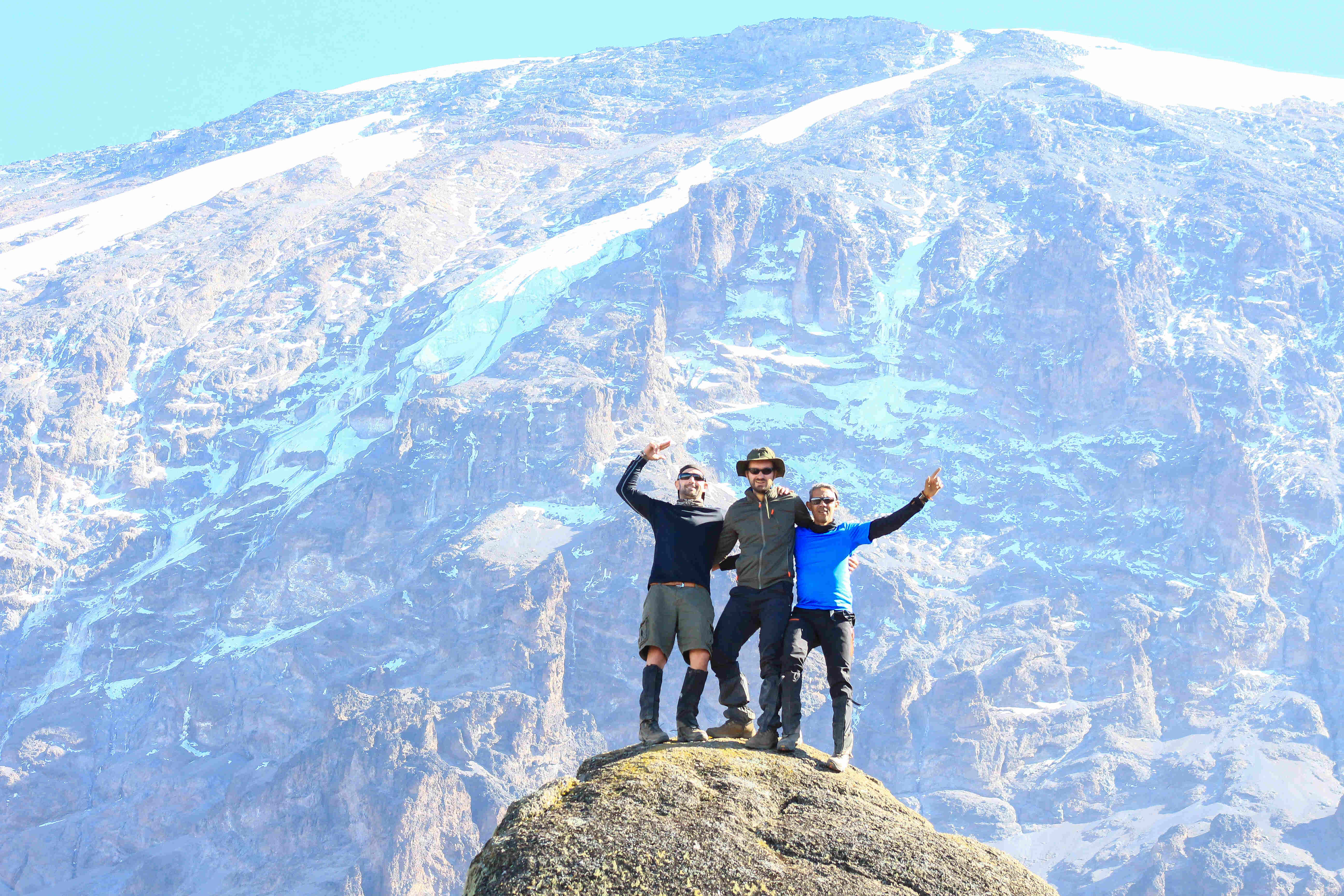

Rich in diverse fauna and flora, Mount Kilimanjaro stands at 5,895 meters making it the tallest mountain in Africa and the world’s highest freestanding mountain. Conquering Mt. Kilimanjaro is mostly a matter of fitness and determination mixed in with how well your body adjusts to the high altitude. Our staff are well trained in recognizing signs of altitude sickness – the biggest enemy to a successful summit. Your health will be expertly monitored along the way. By listening to your guides and heeding their advice, you will have the greatest opportunity for a successful and healthy climb.
Trekking routes
There are several routes to choose from, taking anything from 5 to 10 days depending on your abilities, budget and time. These are: Machame route (6 or 7 days), Marangu route (5 or 6 days), Rongai route (6 or 7 days), Umbwe route (6 days), Lemosho route (7 to 9 days). We usually recommend both the 7 Day Machame and 8 Day Lemosho routes as good options for climbers of all abilities. Not only are these routes known for being incredibly scenic, they also both have very high success rates as they allow your body to adjust to the altitude over several days.
Climbing Kilimanjaro involves passing through several climate zones, from equatorial rain forests surrounded by banana and coffee plantations, to near arctic conditions. This makes packing the right layers vital. We’ve prepared a page with relevant details for you to prepare a Mount Kilimanjaro climb.
December – February
• Regarded by some as the best time to climb
• Favorable weather conditions
• Good visibility from the summit
March – June (low season)
• Weather can be rainy
• Despite being wetter, it is not cooler
• Visibility is good
July – August (high season)
• These months see a drop in temperature
• Usually no rain
• Busier season, seeing more groups on the mountain
September – November
• Weather is fair
• Generally little rain
• Fewer groups on the mountain
Safety & Success rate
Your safety one number one concern, and we have some of the best guides in town who are accompanied by the best mountain safety equipment and evacuation procedures.
On the mountain we make sure:
• You eat and drink properly
• We check your oxygen levels twice a day
• We brief you on every aspect of safety and healthy practices
• We observe for any signs of altitude sickness and act accordingly
• We follow all emergency procedures when needed
Our success rate is 98%
• This means most of the clients succeed in reaching the summit
• This is because we observe early signs of altitude sickness which is a major cause of people not making to the top
• However, we don’t risk the lives of our clients, that’s why some do not make it to the top.